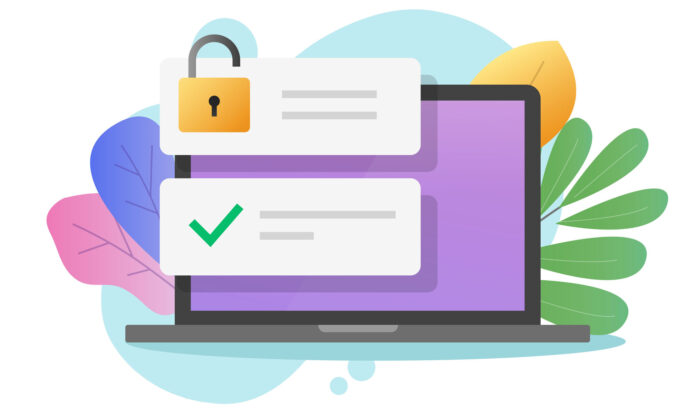Spam is a common and age-old problem that plagues people and businesses across the world. This is the sending of bulk messages, for the most part, to recipients who have not requested or authorized their receipt.
Spam is like a disease: there is no way to eliminate it definitively, but it is possible to “treat” and even avoid it through anti-spam techniques, some of which we will talk about in this post.
There are several types of spam and it is enough to have an email address to be liable to receive them. We will classify them below into two main groups:
- Less harmful: Sent by companies that advertise in an unauthorized way, usually at a high frequency of sending, and have low response rates. Considering that a single person can receive hundreds of emails like this in a single day, we may deduce that hours and hours of work are lost in the interruptions between receiving and cleaning email boxes by users.
- More harmful: Malicious entities take advantage of the ease of sending large numbers of messages to spray attractive content that serves as bait to catch unsuspecting users.
Among these threats, the most common are: e-mails from entities that pretend to be financial institutions and lead to internet pages that request passwords (phishing); e-mails with a message that arouses the user’s curiosity to click and download something – a photo, for example – and in reality, it is a malicious program to invade or damage the network (viruses, worms, trojans, etc.).
There are a large number of solutions that companies can use to reduce the burden and impact of spam by detecting, filtering, and blocking messages. Below is a list of the top anti-spam techniques that we consider most relevant for companies:
1. Authentication:

There are systems that only accept corporate emails sent from authenticated senders. For the most part, this authentication is done through the Domain Name System (DNS) according to the reputation of the domain name. This system does not have the ability to detect whether a message is spam or not, it just trusts that the authenticated domain name has a lower risk of performing the undesired activity.
2. Validation system:
A method widely used by email providers for retail businesses is to ask the sender of the message to resolve some challenge or respond to an email before the message is delivered. It is not a very efficient technique and can cause discomfort for well-intentioned senders.
3. Filter by verification:

As spam is sent in large quantities and messages have only small variations, it allows the verification filter to detect and create a database with what the messages have in common. Through several email managers, it is possible for users to report that the message is spam through a button. Then, the filter recognizes and registers the spammers so that the same sender cannot get through the filter in future mailings.
4. Rule-based filter:
The rule-based spam filter is a widely used technique that detects spam through keywords commonly found in the subject or body of the sent message. It is possible to find lists already structured by institutions that control spam in the world, as the email service administrator can determine new rules – however, care should be taken not to use terms that can block legitimate messages.
5. Hybrid filter:

The hybrid spam filter is a technique that judges whether a message is spam or not through a score that can be assigned according to various aspects of the message. The message is considered spam and blocked by the filter when it exceeds a stipulated point limit.
6. Outbound spam protection:
Outbound protection identifies spam from the sending source and can take automatic blocking action when that source exceeds a certain number of sendings. This anti-spam technique makes it possible to stop spam before it is even sent, completely protecting the network from damage and costs that could be caused by spam.
7. Detection by layer:

Layer protection and detection is an antispam technique that allows you to stop unwanted messages in real time, even before they are delivered to users. This technique makes use of integration with a global data network that indicates spam patterns. It is an automated form of antispam that depends little on the company’s internal administration.
8. Filter based on reports:
This technique is one of the most automated and commonly found on the market. The email system “learns” to judge messages based on feedback from users who mark a message as “spam”, or even identify a legitimate message that has landed in junk mail and mark it as “not spam”. Based on statistics, this anti-spam technique is considered highly reliable.
9. SMTP Authentication:

SMTP authentication is an anti-spam technique that detects whether the message recipient is really valid through a return SMTP connection. It is an anti-spam technique considered secondary since it depends on the complementarity of other techniques to work effectively.
One extra tip to verify the sender of the message:
If there is a phone number among the contact details of the sender, you can check it with a reverse phone lookup. PhoneHistory or NumLookup provide you with all the necessary information about the owner of the number, including their location, personal and business records, as well as the indication of whether the number is associated with spam.
Conclusion
The purpose of this guide is to educate companies and our blog readers about the wide range of antispam techniques used around the world. It is important to emphasize that there are no better or worse techniques – many of them are complementary to each other. What really determines the effectiveness of each technique is how suitable it is for the company’s needs.
There are several antispam solutions available in the market which allows customizing anti-spam techniques according to the customer’s needs. Most of the solutions are innovative and do not require a customer to purchase hardware or configure and administer the solution.







